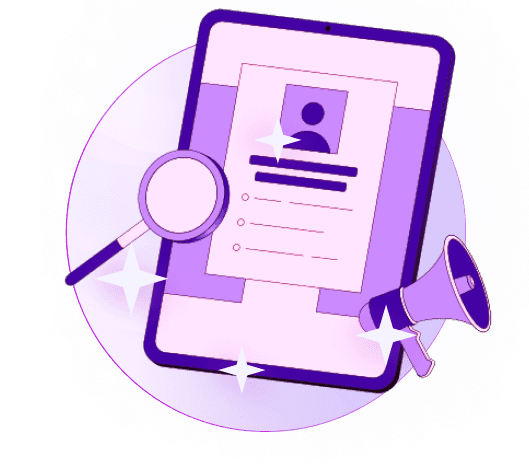Blogs
Articles

5 Mistakes to Avoid When Implementing AI for Lead Generation
In today’s fast-paced business landscape, Artificial Intelligence (AI) for lead generation can feel like a game-changer—if used correctly. However, diving in without caution can lead to setbacks.
Let’s explore five common mistakes businesses make when implementing AI for lead generation and how to avoid them.
Mistake 1: Neglecting Data Quality
AI’s effectiveness depends on the quality of data it processes. Outdated, incomplete, or inaccurate data will hinder AI’s ability to generate valuable leads.
Real-Life Insight:
A marketing firm rushed to implement AI without cleaning its database, resulting in duplicates and irrelevant contacts. While the AI generated leads, many were outdated or irrelevant.
Solution:
Invest in cleaning your data before implementation. Regularly audit and update your databases to ensure that AI processes accurate and up-to-date information, leading to better lead generation results.
Mistake 2: Overlooking the Human Element
AI can streamline processes, but relying solely on it can make interactions feel impersonal. Prospects still value personalized connections.
Engaging Anecdote:
A startup relied entirely on AI for lead generation but found its conversion rates dropping. The interactions felt robotic, leaving prospects disengaged.
Solution:
Balance AI with human touchpoints. Use AI to gather insights, but have your team follow up with personalized messages or calls. This hybrid approach builds rapport and drives conversions.
Mistake 3: Ignoring Continuous Learning and Adaptation
AI systems are not static. Failing to update your AI model as your business or market changes can make it ineffective over time.
Case Study Example:
A company used an AI model based on outdated buyer personas. As their audience evolved, their lead quality diminished, and ROI plummeted.
Solution:
Regularly review your AI’s performance and make adjustments based on new trends and consumer behaviors. Implement feedback loops to keep your strategy aligned with market changes.
Mistake 4: Setting Unrealistic Expectations
AI is a tool, not a magic wand. Expecting instant results without a strategy will lead to disappointment.
Personal Insight:
A colleague’s company anticipated a surge in leads after implementing AI but saw little change due to a lack of understanding of the tool’s capabilities.
Solution:
Set realistic expectations and integrate AI as part of a broader strategy. Combine AI with ongoing engagement efforts and define clear KPIs for success.
Mistake 5: Failing to Train Your Team
Without proper training, your team may struggle to leverage AI effectively. AI tools can be complex, and untrained teams may misinterpret data, leading to inefficiency.
Insightful Example:
A tech firm implemented AI but didn’t train their sales team. They misinterpreted AI insights, wasting time on unqualified leads.
Solution:
Provide comprehensive training to your team, ensuring they understand how to use the AI tools and interpret its outputs. Regular training sessions will keep their skills up to date.
Conclusion
While AI can revolutionize lead generation, avoiding these common mistakes is key to success. By ensuring data quality, balancing human interaction, and adapting to change, you can maximize the potential of AI.
Looking for an AI solution? Persana can streamline your lead generation while helping you create meaningful connections.
Remember: success comes from blending AI with human insight!

Create Your Free Persana Account Today
Join 5000+ GTM leaders who are using Persana for their outbound needs.
How Persana increases your sales results
One of the most effective ways to ensure sales cycle consistency is by using AI-driven automation. A solution like Persana, and its AI SDR - Nia, helps you streamline significant parts of your sales process, including prospecting, outreach personalization, and follow-up.



